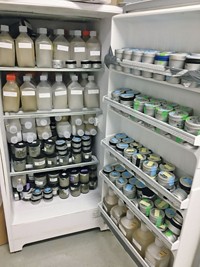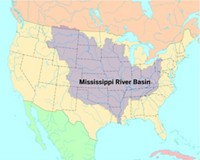Advertisement
Grab your lab coat. Let's get started
Welcome!
Welcome!
Create an account below to get 6 C&EN articles per month, receive newsletters and more - all free.
It seems this is your first time logging in online. Please enter the following information to continue.
As an ACS member you automatically get access to this site. All we need is few more details to create your reading experience.
Not you? Sign in with a different account.
Not you? Sign in with a different account.
ERROR 1
ERROR 1
ERROR 2
ERROR 2
ERROR 2
ERROR 2
ERROR 2
Password and Confirm password must match.
If you have an ACS member number, please enter it here so we can link this account to your membership. (optional)
ERROR 2
ACS values your privacy. By submitting your information, you are gaining access to C&EN and subscribing to our weekly newsletter. We use the information you provide to make your reading experience better, and we will never sell your data to third party members.
Environment
Levels Of Antibiotic Resistance Gene Spike Downstream Of Human Activity
Environmental Chemistry: Wastewater treatment plants and animal feedlots may have deposited resistance gene in river sediments in Colorado
by Laura Cassiday
October 16, 2012
CORRECTION: This story was updated on Oct. 18, 2012. David Graham’s comment was corrected to say that Pruden’s work is among the first, not the first, to link location of human activity with levels of resistance genes.
In river sediments, the level of an antibiotic resistance gene carried by bacteria increases when wastewater treatment plants and animal feeding facilities are nearby, according to a new study (Environ. Sci. Technol., DOI: 10.1021/es302657r). These types of facilities could contribute to the spread of antibiotic-resistant bacteria into the environment, the researchers say.

Most strategies to curb the rise of antibiotic-resistant bacteria have focused on interventions at the clinic, such as urging doctors not to overprescribe antibiotics, says Amy Pruden at Virginia Polytechnic Institute & State University. However, she says, increasing evidence suggests that antibiotic resistance also spreads from environmental sources.
When humans or animals ingest antibiotics, they excrete both the drugs and bacteria resistant to those drugs. The antibiotics and resistant bacteria then can enter rivers through wastewater-treatment plant effluents or runoff from livestock operations. In river sediments, bacteria can share antibiotic resistance genes with each other, spreading resistance. Researchers think that higher antibiotic concentrations in rivers may also increase the probability of bacteria developing resistance to the drugs.
To stanch the flow of antibiotic-resistant bacteria into the environment, researchers first need to understand the sources of the resistance genes, says Pruden. With this goal in mind, Pruden and her colleagues looked for two antibiotic resistance genes, sul1 and tet(W), in bacteria along the South Platte River Basin, in northern Colorado. Sul1 confers resistance to sulfonamide antibiotics, while tet(W) makes bacteria resistant to tetracycline.
The South Platte River Basin is ideal to study, Pruden says, because it starts in a pristine region of the Rocky Mountains that is far from human-affected bacteria and antibiotics. She uses water sediments from this region as a baseline for natural levels of antibiotic resistance genes. The river system then flows past 89 wastewater treatment plants and 100 animal feeding operations.
The team studied river sediments at 10 sites along the river basin. They extracted DNA from each sediment sample and then used quantitative polymerase chain reaction to measure the amounts of the two genes.
Levels of sul1 in river sediments correlated with the number of animals at upstream feedlots. Using animal numbers adjusted by the feedlots’ distance from sampling sites, they found that upstream feedlots with 10,000 cattle increased the sul1 levels by about 10,000-fold compared with sul1 levels in pristine regions of the river. The researchers also determined that levels of sul1 rose downstream of wastewater treatment plants. The levels of the gene correlated with the volume of water discharged from the plants, but the association was not as strong as the one for animal feedlots. A wastewater treatment plant with 10 million gallons per day of effluent discharge increased the downstream levels of sul1 by 1,000-fold compared to pristine sediments.
In contrast to sul1, tet(W) levels did not correlate with human activity along the river. Pruden thinks these data suggest that, compared to sul1, tet(W) doesn’t persist as long or transfer as well among bacteria that live in these sediments.
David Graham at Newcastle University, in the U.K., says that many researchers have detected antibiotic resistance genes in bacteria from rivers and other bodies of water in recent years. But Pruden’s work, he says, is among the first to quantitatively link locations of human activity to levels of resistance genes. Graham thinks other researchers should apply her methods to other river systems to determine whether similar relationships occur elsewhere.




Join the conversation
Contact the reporter
Submit a Letter to the Editor for publication
Engage with us on Twitter